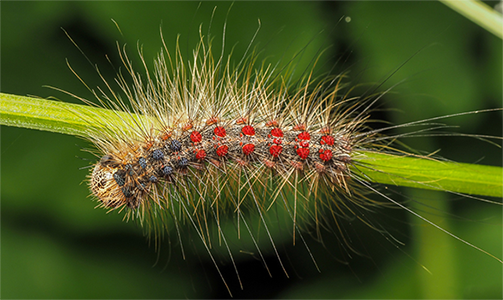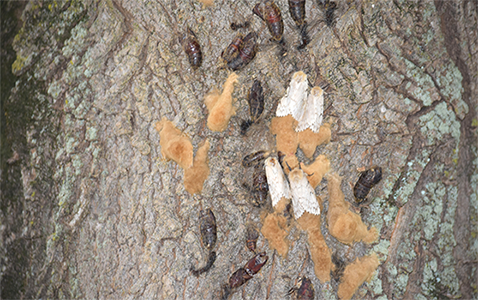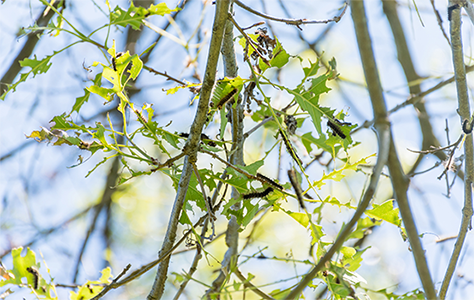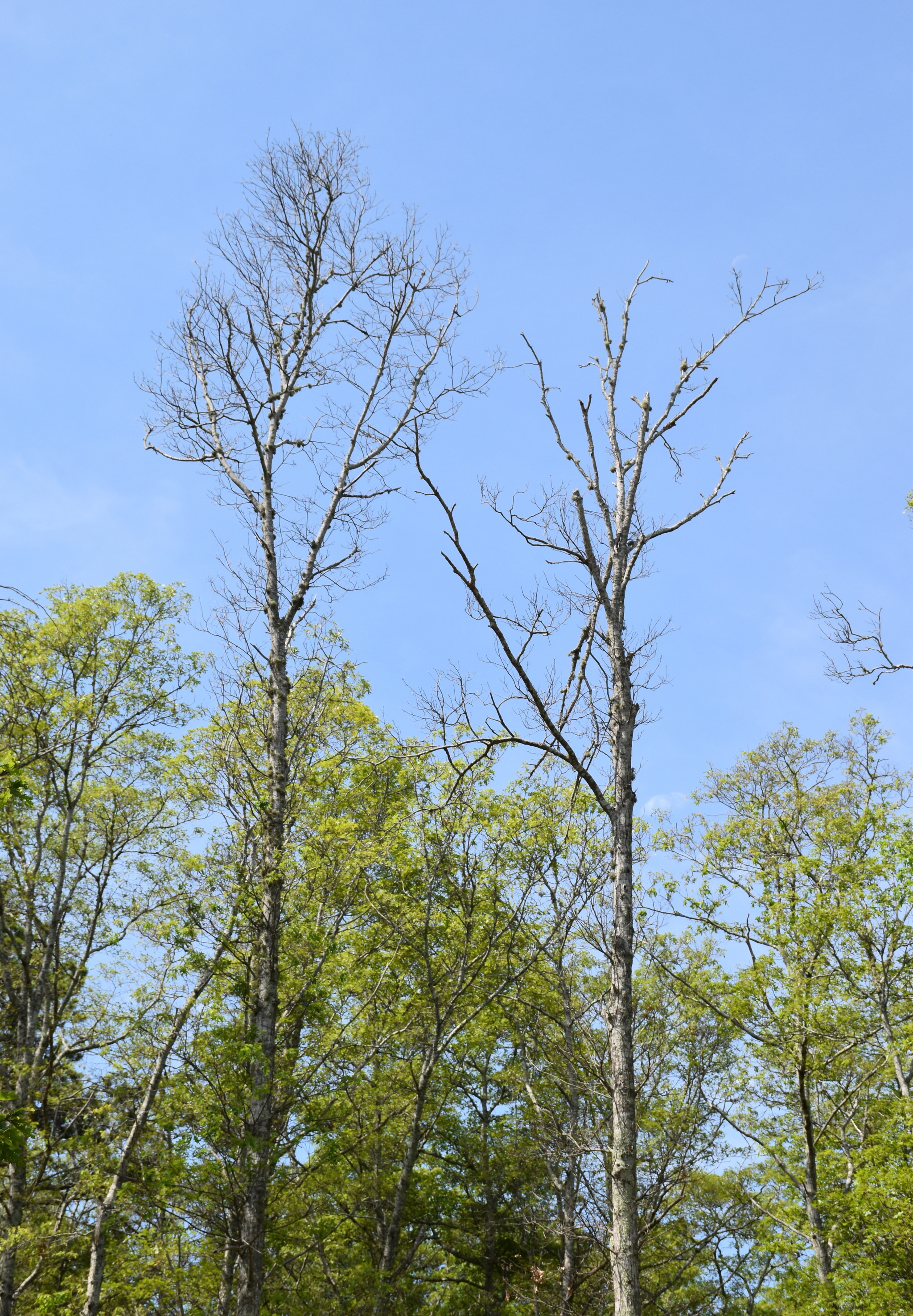Look and report
Spongy moth is a declared pest in Western Australia.
Spongy moth is not known to occur in Australia and must be reported to DPIRD if found or suspected to be present in WA.
What is spongy moth?
Spongy moth (Lymantria dispar) is a destructive and costly pest insect. Its larval stage is a severe defoliator of a wide range of broad-leaved trees and shrubs.
Young caterpillars feed in groups and large infestations can defoliate entire plantations. Shipping containers are considered a major contributor to the worldwide spread of the pest.
This pest is not present in Western Australia, so its early detection will improve chances of eradication and containment, helping protect WA’s native plants, forests, fruit and nut producers, as well as building and furniture industries.
What plants are affected?
Spongy moth affects more than 1,000 plant species including eucalypts, pine trees, fruit, and nut trees.

What do I look for?
- Egg-masses are tan to rust coloured or very pale, with a fine felt-like appearance. These may contain 400-1,000 eggs.
- The moths lay egg masses on hard surfaces, usually tree trunks and branches but also on logs, outdoor furniture, nursery stock, pallets, shipping containers and on the hulls and rigging of ships.
- Caterpillars are pale to dark grey and hairy (up to 7 cm long). They present two rows of raised spots on their back: five pairs of blue spots followed by six pairs of red spots. Occasionally they may have all-blue spots. Juvenile caterpillars below 2 cm may lack the coloured spots.
- Caterpillars feed in groups, defoliating trees. Young caterpillars are extremely voracious feeders resulting in branches and sections of a tree suddenly losing their leaves.
- Male moths are grey-brown (3-4 cm wingspan) and female moths are pale yellow with wavy dark brown bands (4-7 cm wingspan).
What damage can this pest cause?
Spongy moth caterpillars can defoliate trees in farms, fruit and nut orchards, bushland, plantations, and sometimes whole forests, causing billions of dollars of damage.
In high numbers, larvae can strip all leaves from a tree.
Severe defoliation can reduce tree growth and predispose trees to attack from other insects and diseases.
Spongy moths hold great potential for damage to commercial radiata pine plantations, which would have a severe economic impact on building and furniture industries in Western Australia.
How does spongy moth survive and spread?
Spread over long distances occurs through human activity such as the movement of infested plant parts, wood, nursery stock, machinery, and equipment, as well as on cargo and in shipping containers.
- Spongy moths overwinter as eggs. Although it only takes about one month for larvae to develop inside of the eggs, they usually do not hatch for eight or nine months over winter.
- Masses of eggs are located closer to the ground or within crevices which protect them from cold temperatures. Eggs can resist temperatures up to −20°C without freezing.
- Mature larvae pupate within a silk nest on a trunk, rock or in leaf litter until complete development within three weeks to emerge as moths.
- Spongy moth larvae can feed on many hosts, making it a very adaptable invasive species. Feeding patterns depend on larval stages (instars):
- Eggs usually hatch in spring, coinciding with the budding of most hardwood trees.
- Feeding activity in the first three instars only occurs during daylight hours, but from the fourth instar onwards feeding occurs at night.
- Young larvae travel from the bark of the tree to feed on the new foliage by cutting small holes in the surface of leaves. Food intake increases as the larvae grow and feed on the edge of the leaves.
- Young larval stages can travel up to 200m by spinning silk from their head and travelling on wind currents. They can travel several kilometres and reach new hosts when departing from an elevated position.
|
Female moths lay egg masses with a spongy rust coloured appearance
|
|
|
Caterpillars can quickly devour foliage |
|
|
Caterpillar infestations can result in defoliation of entire tree plantations |
|
Legal duty to report
Spongy moth is not known to occur in WA. Lymantria dispar (Linnaeus, 1758) is a declared pest under section 12 of the Biosecurity and Agriculture Management Act 2007.
This means that any person who finds or suspects the presence of spongy moth must report it to the department.
Related links
- Alert Centre
- Biosecurity advice for buyers and sellers of shipping containers (5.61 MB)pdf
- Spongy moth - factsheet (2.53 MB)pdf
- Spongy moths (Department of Agriculture, Fisheries and Forestry)
- Spongy moths (Plant Health Australia)
- Pest and Disease Information Service (PaDIS)
- Western Australian Organism List (WAOL)



